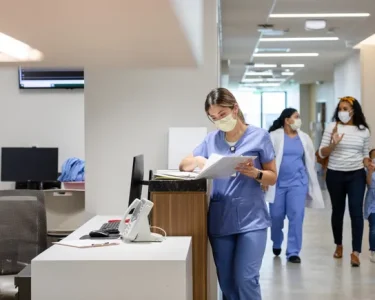The following is a guest article by Eric Rock, Co-Founder and CEO at Percipio Health
How do we effectively monitor and manage population health in the United States?
It’s an important question, with much at stake. The U.S. famously spends the most on healthcare among developed nations, yet it has some of the worst outcomes and the lowest life expectancy. We are an outlier in our high rates of chronic conditions and obesity, yet Americans see doctors less often than citizens of peer nations. You cannot treat what you can’t diagnose, but access to care is another of our many Achilles heels.
If we are serious about lowering costs and infusing more value into our healthcare system, then we must find ways to reach more patients earlier, identify health problems before they worsen, and encourage people to get preventive care that keeps their conditions manageable. But how?
The Limits of RPM
Remote patient monitoring (RPM) can certainly play a role. At Vivify Health, the RPM company I founded, we used our Bluetooth biometric devices and platform to drive average reductions of more than 50% in overall care costs, along with significant decreases in mortality. We proved that we could keep at-risk elderly patients — average age of 77 — healthy at home, out of the hospital, when we applied the technology.
Regardless of the positive outcomes, we were limited to only a small subset of patients who needed this level of care. The scale of unmet population health needs remains enormous.
The primary limiting factor of RPM is the cost of equipment — tablet, weight scale, pulse oximeter, glucometer, blood pressure monitor, and so forth — plus the logistics of getting it into the home and retrieving it, and providing ongoing technical support.
There are other shortcomings. RPM devices measure vitals alone, providing a limited view of a patient’s health, with alerts that lead to a reactive, rather than proactive, approach to care. What’s more, nurses often find themselves spending enormous time managing lost or malfunctioning devices rather than attending to patients and clinical tasks.
Remote patient monitoring in its current device-intensive form delivers on its mission, but only for a small portion of the population – the highest 1% of risk. The costs and other factors limit the ability to scale RPM to the levels needed for population-wide monitoring.
But there’s a solution to this with something that already exists at scale today — the modern smartphone, now used by more than 90% of Americans.
Health Tracking Meets AI
The rise of mobile apps that gauge health metrics, count steps, provide telehealth access, and more is testament to the incredible usefulness of modern smartphones to monitor and help manage patients’ health. Sophisticated, embedded sensors can measure vitals such as heart rate and blood pressure risk, blood oxygen levels, gait analysis, and sleep tracking. Paired with major improvements in processing and data storage, smartphones “have opened a new window of opportunity for cost-effective remote healthcare services,” as one study noted.
Pairing these sensors with rapidly advancing artificial intelligence can supercharge the smartphone’s potential for population health monitoring and management by identifying risk early.
For example, AI speech models can listen to a patient’s voice to detect everything from energy levels to mild cognitive impairments, depression, and even early signs of serious conditions like dementia or Parkinson’s disease.
Further, a proprietary AI vision model is getting increasingly good at identifying oral medications from journaling photos submitted by patients — an attribute that could help with medication adherence, interaction risks, and provide valuable holistic analysis when paired with other health data.
Combining smartphones with AI analytics for ongoing, proactive data collection has the potential to help identify subtle physiological changes that might be symptoms of more serious health issues, like early diabetes or neurodegenerative disease. It could also provide a wealth of valuable insights related to social determinants of health, such as a lack of transportation or ability to access primary care.
If this sounds far-fetched, it shouldn’t. A study from 2023 found that ChatGPT outperformed medical journal readers in correctly diagnosing complex cases. Meanwhile, Google has announced impressive milestones for both its Med-Gemini models in understanding and analyzing medical text, images, and real-time data. Additionally, its AMIE diagnostic AI chatbot matched or outperformed human clinicians in multi-visit disease management consultations in a randomized study.
For the purposes of scaling to population health, the beauty of AI is its ability to discern clinical patterns from millions of data points almost instantly, a task that falls to nurses in traditional RPM workflows. The models can then leverage the wealth of accumulated medical knowledge to outline the best course of action to support clinicians, helping to improve outcomes at lower costs.
As they analyze rich datasets of patient health signals and potential clinical actions, the models can tailor insights and recommendations for care teams about individual patients based on automated and ongoing risk stratification.
That will help strengthen patient engagement and adherence, improving outcomes at lower costs, at the scale necessary to effectively manage population health.
 About Eric Rock
About Eric Rock
Eric Rock is a veteran healthcare technology entrepreneur and innovator. He has founded, scaled, and exited three software companies, including Vivify Health, a remote patient monitoring platform that was acquired by UnitedHealthGroup’s Optum division in 2019.



